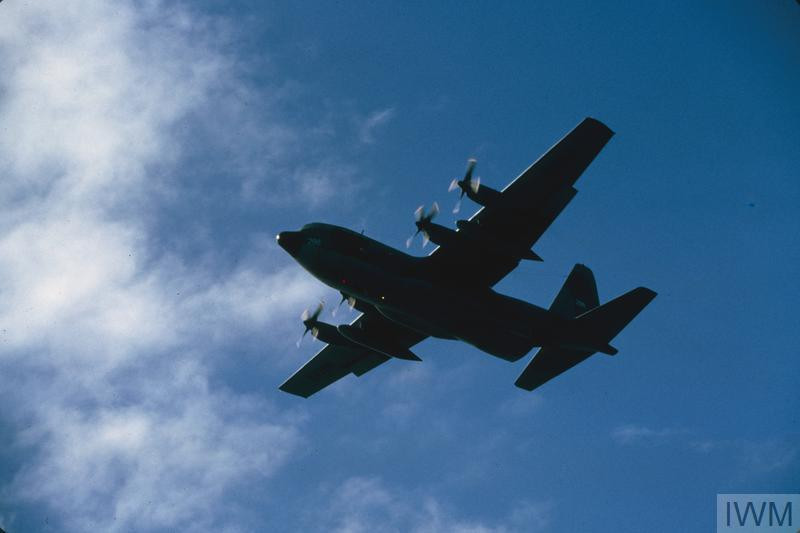British forces continued to move into position during Thursday 29 April 1982, with the Carrier Battle Group (CVBG) steaming ever closer to the Falkland Islands and the RAF preparing for the first major strike against the Argentine invaders.
The last major replenishment at sea by ships of the CVBG before entering the planned Total Exclusion Zone (TEZ) around the islands began late in the afternoon of 29 April, the ships by now being some 500 miles east of the capital of the Falklands, Stanley, which lies at the easternmost point of East Falkland.
Frigates HMS Brilliant and HMS Plymouth joined the Group today, having sailed west from South Georgia following the successful conclusion of Operation Paraquet – the retaking of the remote outpost.
On the same day, the first two Avro Vulcan B2 bombers landed at Wideawake Airfield on Ascension Island, having flown from RAF Waddington in Lincolnshire to prepare for Operation Black Buck, a series of raids against Argentine facilities on the Falklands.
And leaving Ascension over an extended period of time from the end of April were elements of the Amphibious Group, including assault ships HMS Fearless and HMS Intrepid, Landing Ships Logistic RFAs Sir Geraint, Sir Lancelot, Sir Percivale and Sir Tristram, and tanker RFA Plumleaf.
One interesting STUFT – Ship Taken Up From Trade – to leave the UK on 29 April was the Southampton-based cable ship Iris, one of the smallest of the merchant vessels requisitioned by the MOD.
Originally built for the GPO in 1976 to carry out submarine cable repair work around the UK and out into the Atlantic, the 3,880-ton British Telecom ship sailed on 26 April from Southampton to Devonport, where she was fitted with a larger helicopter landing deck, a rudimentary mess for her Naval party and a Heath Robinson-style fuel tank for helicopters – a rubber bladder contained in an open-topped steel box on the upper deck.
She sailed from Devonport to Ascension on 29 April, ready to take on the role of support ship and despatch vessel, ferrying stores, personnel and mail between Ascension and the Falklands.
In seven months of active service CS Iris (which apparently stood for ‘Can Supply In Rain, Ice or Storm’, according to her crew) is reported to have steamed more than 40,000 nautical miles and was involved in around 800 helicopter movements in a period of just over two months.
Today’s image from the Imperial War Museum collection (© IWM FKD 745) shows an RAF Hercules passing low over the British Telecom Cable Ship Iris. The Hercules, its cargo bay door open, is about to make an airdrop of supplies to Iris, which served as a despatch vessel during the Falklands Conflict. The picture was taken by Surg Lt Steve Townsend, the Royal Navy’s Medical Officer on board CS Iris.
* These posts can only give a brief sense of what was a complex and fast-moving situation 40 years ago, and cannot cover the involvement of every ship, squadron and unit in detail – for a much more comprehensive account see naval-history.net at https://www.naval-history.net/NAVAL1982FALKLANDS.htm
